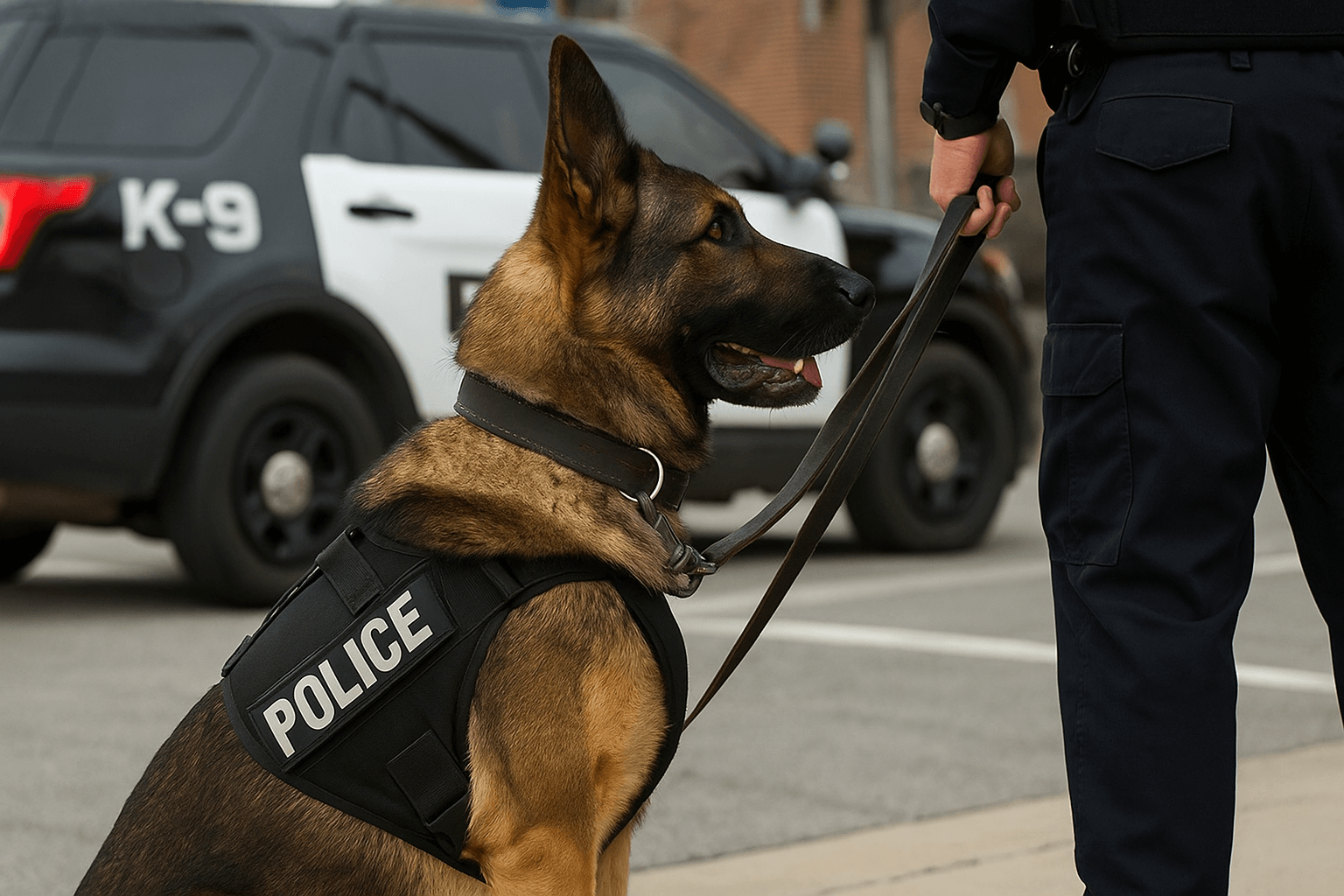If you’ve ever seen a police dog in action or watched a cop drama, chances are you’ve heard the term K9—but what does it really mean? Why do we write it as "K9" instead of just saying canine? Let’s dig into the paw-some history behind this famous term and learn why these working dogs are more than just furry officers.
What Does K9 Stand For?
At first glance, K9 might look like a code name, but it’s actually a clever play on the word canine (the scientific term for dogs). Phonetically, "K" stands for the hard “C” sound, and “9” sounds like “nine”—put it together and you get K-nine, or K9.
The Origin of the K9 Name
The use of dogs in law enforcement goes back centuries, but the stylized term “K9” began gaining traction around the 1940s and 1950s. During World War II, military working dogs were essential on the battlefield. After the war, their roles expanded into civilian police forces. The U.S. military and police departments needed a way to label canine units efficiently, and thus, the term K9 unit was born.
Why Use “K9” Instead of Just Saying Canine?
Great question! Using “K9” is shorter, punchier, and has a military-style flair that fits the specialized nature of these teams. It also works well for labeling gear, vehicles, and uniforms. Plus, it’s universally understood in law enforcement circles.
What Makes a Dog a Police K9?
Police dogs—or K9 dogs—are highly trained to assist officers in a variety of duties:
- Detection: Sniffing out narcotics, explosives, or even electronics
- Tracking: Following the scent of a missing person or suspect
- Apprehension: Helping detain or subdue fleeing suspects
- Protection: Guarding their handler or team
These aren’t your average pups—K9s are elite! They go through rigorous police K9 training and often work in high-pressure situations alongside their K9 handler.
Popular Police Dog Breeds
Not every dog is cut out for the job. Some of the most common police dog breeds include:
- German Shepherds: Known for their loyalty, intelligence, and courage
- Belgian Malinois: Agile, fast, and focused—often used by military and SWAT teams
- Labrador Retrievers: Especially skilled in detection work
- Dutch Shepherds: Reliable, strong, and versatile
From Military to Law Enforcement
The transition from military working dogs to police K9s was a natural evolution. Dogs have served in wars since ancient times, but the modern-day use of trained working dogs began to formalize during World War I and II. Today, these canines serve in urban police departments, border patrol units, airports, and even in search-and-rescue missions.
K9 Units Around the World
While the term “K9” is popular in the U.S., similar programs exist globally. In the UK, for instance, you might hear about “police dog units.” Regardless of the label, their mission is the same: serve and protect with unmatched loyalty and bravery.
Canine vs. K9: What’s the Difference?
Technically, canine refers to any dog, while K9 specifically refers to a dog trained for law enforcement or military duties. So, while your golden retriever at home is a canine, it’s not a K9—unless it’s trained to detect contraband under your couch cushions (in which case, we salute it!).
Final Woof: These Dogs Deserve a Medal
K9 dogs are more than just working animals—they're partners, heroes, and family. Next time you see a K9 unit on patrol or at an event, give them a silent nod (or a belly rub, if allowed). They’ve earned it.
🐾 Looking for more canine content? Check out our guide on healthy treats for dogs that even K9s would love!
Frequently Asked Questions (FAQs)
1. What does K9 stand for?
2. Why are police dogs called K9s?
3. Are all K9 dogs the same breed?
4. What’s the difference between a canine and a K9?
5. How are K9 dogs trained?
6. Can K9 dogs live with their handlers?

About SniffnTail
SniffnTail is your go-to destination for everything pets. From helpful advice, tips, and insights to thoughtfully selected products and resources, we’re here to support pet owners at every stage of their journey. Whether you're caring for a playful pup, a wise old cat, or anything in between, SniffnTail offers tools and knowledge to make pet parenting easier and more joyful.
Related Articles
 Training & Behavior • 7 min read
Training & Behavior • 7 min readScent Training for Dogs: Where & How to Start
Discover how to start scent training for dogs at home with fun, expert-approved tips for beginners, puppies, and future sniffer dogs.
 Training & Behavior • 5 mins Read
Training & Behavior • 5 mins ReadHow Much Exercise Does Your Dog Need? A Complete Guide for Dog Owners
Whether you're a new pet parent or an old dog hand, one of the most frequently asked (and important) questions is: How much exercise does my dog require? Similar to humans, dogs need ongoing exercise in order to remain happy, healthy, and mentally stimulated.
 Training & Behavior • 5 mins Read
Training & Behavior • 5 mins ReadWhy Microchipping Matters More Than Ever
Picture the devastation of losing your dog — only to discover there's no possible way for someone to recognize and return your pet. Microchipping is where that ends. As a permanent, foolproof form of pet identification, microchipping your dog greatly improves the possibility of safe return should they ever get lost or stolen.

